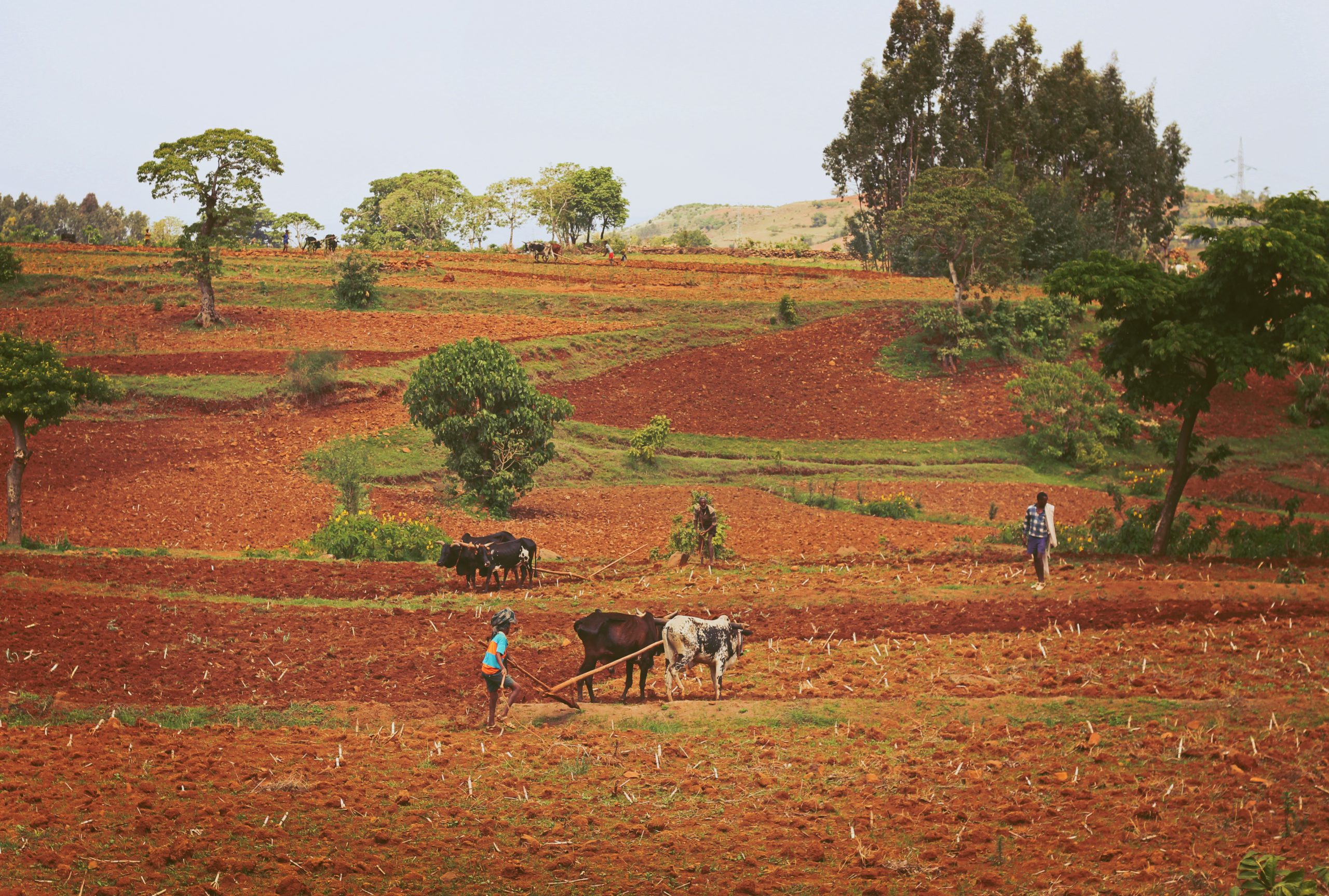Alice Chautard, REACH Communications and Knowledge Exchange Manager
In September 2019, Dr Katrina Charles and I travelled to the REACH programme’s Aba Gerima site, located in western Ethiopia, some 25km from Bahir Dar. Travelling to Bahir Dar from the capital Addis Ababa, we flew over the source of the Blue Nile, passing over hundreds of streams and rivers, stretching as far as the eye could see beneath us. At first sight, one could hardly imagine that the highlands of Ethiopia could ever struggle for water.
In the Ethiopian Highlands, however, water security isn’t just a matter of how much water is annually available throughout the region. The rains fall in two to three months bursts during the summer, leaving the rest of the year dry. The area suffers from severe land degradation, caused in part by farming practices that make the soil prone to being washed away during those heavy precipitation events in the rainy season. It is estimated that the Ethiopian Highlands lose about 1.5 billion tons of topsoil annually. Beyond the loss of fertile land, soil erosion also contributes to increased sedimentation in streams and to poor water infiltration. Less land available and decreased water availability can lead to reduced agricultural productivity and growth: a serious issue in the Highlands where agriculture constitutes a vital part of the economy.
There is hope, however, that the situation improves. The government of Ethiopia has adopted a sustainable land management (SLM) approach to protect vulnerable environmental systems and to stabilise the income and livelihoods of the poor. Since 2012, the Water and Land Resource Centre (WLRC) has been working in six Learning Watersheds to help farmers implement SLM practices that encourage better infiltration, such as terracing and the construction of soil bunds. These help recharge groundwater and increase water availability from streams and wells during the dry season, providing greater water security for both households and agricultural water users. Valuable grasses and trees can also be grown on soil bunds so farmers can harvest fodder for animals, and compensate the reduction in planting area. SLM increases soil moisture, which is an essential input for agricultural production and contributes to improving food security.
So far, the results have been positive, with an increase in stream baseflow during the dry season, improved food production, and an 80% reduction in soil loss. Farmers who had relied on surface water sources in the past are increasingly gaining access to groundwater via handpumps and to improved drinking water at the same time. As part of the initiative, the installation of small-scale irrigation technology has also led to the planting of high-value crops such as bananas, mangos, avocados and coffee.
Ensuring that these developments contribute to poverty reduction at the household level and to supporting human development is not a straightforward endeavour however. In Ethiopia in particular, there has been limited work assessing the impacts of SLM approaches and the benefit of the bio-physical improvements for poverty reduction.
Building on WLRC’s work on Sustainable Land Management in Aba Gerima, the REACH programme, with WLRC and in partnership with the International Food Policy and Research Institute (IFPRI), and IRC aims to shed light on the complex relationships between poverty dynamics and water security, from both the natural science and social science perspectives. Understanding the gender differences in access to and control over water is a key component of this work. REACH will be engaging and working with key government and practitioner stakeholders, such as the Ministry of Water, Irrigation and Electricity (MoWIE) and the Ministry of Agriculture and Natural Resources (MoANR), throughout the programme to inform water management and policy decisions around SLM and ensure research outputs lead to practical improvements on the ground.
As part of REACH, WLRC and IFPRI have designed a survey exploring the impacts of SLM on poverty and how changes in water security benefit women, men, girls and boys. The survey was completed in August, with over 500 respondents from the two learning watersheds. Some of these initial results will be presented at a high-level event with MoWIE and MoANR in July 2020.
Find out more about our Sustainable Land Management Observatory.

